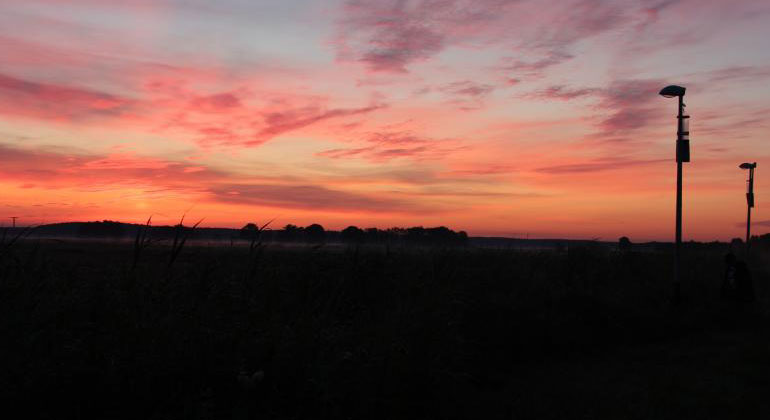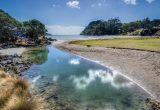Protecting biodiversity: creating dark infrastructure
An international research team with the participation of IGB advocates the worldwide development of a dark infrastructure. This refers to areas and corridors without excessive artificial light at night that protect biodiversity from light pollution.
It is not only physical barriers such as fences, roads and buildings that restrict animals in their natural behaviour and fragment their habitats. Light can do this too – in the form of light pollution, i.e. too much artificial light in the wrong place at the wrong time. Therefore, nocturnal landscapes should be protected in the same way as other habitats, say the authors of a recent study in Landscape and Urban Planning, led by UMS PatriNat in France.
Light pollution alters mobility of nocturnal animals, birds and insects
“Light can act as a barrier, especially for nocturnal animals, which avoid light sources. But there is also the sink or crash effect, namely that birds, bats or insects are irritated and attracted by artificial light sources or die and are then lacking in other ecosystems. Both effects have an impact on populations – on mortality rates as well as on reproduction or foraging. Light pollution is therefore now considered as one driver for the global insect decline and the general loss of biodiversity,” explained Dr Franz Hölker. The IGB researcher is one of the pioneers in the study of light pollution on biodiversity, a topic he has been working on for more than 10 years.
Even in protected areas there is light pollution
Despite the known and suspected ecological effects, light pollution has not yet been an assessment criterion even in protected areas. For example, it has been shown that between 1992 and 2010, dark areas in Europe have decreased by 15 per cent, even in protected areas. “So we are confronted with a threat against which areas such as national parks, reserves and Natura -2000 sites are very poorly protected or not protected at all,” said Dr Sibylle Schroer, IGB researcher and co-author of the study.
Integrating dark infrastructure with green and blue infrastructure
In recent decades, biodiversity protection strategies have increasingly integrated ecological networks through so-called green infrastructure, defined by the European Environment Agency as “a strategically planned network of natural and semi-natural areas designed and managed to contribute to the conservation of biodiversity in fragmented landscapes and to provide a wide range of ecosystem services”. The term blue infrastructure is used to refer specifically to aquatic habitats. But in practice, the term green infrastructure can cover both terrestrial and aquatic habitats. Many Member States have implemented green infrastructure projects since the late 1990s.
“We therefore propose that night-time darkness be included as a protection criterion for green and blue infrastructure. The aim is to maintain or restore an ecological network with as high a degree of natural darkness as possible, which enables the preservation of biodiversity,” said Franz Hölker.
The researchers have described an operational process in four steps that includes:
- Mapping light pollution in all its forms and dimensions in relation to biodiversity,
- identifying dark infrastructure that may or may not emanate from the already identified green/blue infrastructure,
- planning actions to preserve and restore the dark infrastructure by prioritizing lighting sobriety and not only energy saving,
- assessing the effectiveness of dark infrastructure with appropriate indicators.
Pilot projects in France have planned dark infrastructure by using bat detection methods
“There are already dark infrastructure projects in Switzerland, France and the US. They can also serve as case studies for urban and natural areas in other countries,” said Sibylle Schroer.
In the French city of Douai, for example, an acoustic survey of bat activity in the municipal area was used to identify dark infrastructure. This was not translated into core areas and corridors, but into a series of transitions with varying degrees of darkness. The levels thereby reflect the intensity of bat activity. They allow prioritisation of further measures to conserve and restore dark infrastructure.
“Germany also has the potential to implement dark infrastructure within green and blue infrastructure with simple surveys and resources. Germany already has four certified star parks – in the Westhavelland, the Rhön, the Eifel and the Chiemgau – two certified star park islands – Pellworm and Spiekeroog – and Fulda, the first certified star city in Europe. The efforts of the municipalities and cities in these regions can serve as best practice in order to sustainably protect the natural nocturnal conditions in wildlife migration corridors step by step,” said Franz Hölker.
QUELLE
Leibniz-Institut für Gewässerökologie und Binnenfischerei (IGB) 2022








